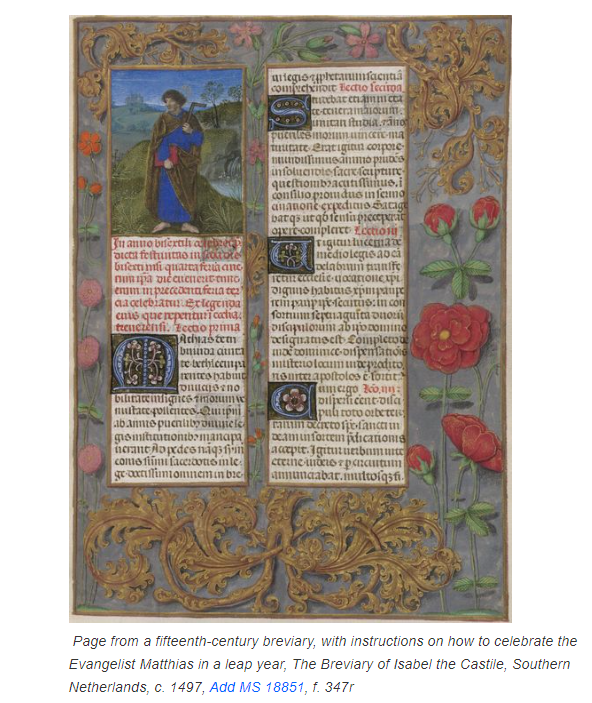
This year is a leap year, when tradition has it that on 29 February we women are permitted to propose to the men of our choice. Well, I doubt that much of that goes on these days, not least because marriage itself seems to be on the decline. Oh, and if you were born on 29 February, you’re a leapling’, which is something I’d never heard before.
But leap years caused confusion in the past, as I discovered when trying to assemble all my research. When, exactly, were the irritating the extra days/hours added to the calendar? The Ancient Egyptians had a whole leap month…which was copied by the Romans, until Julius Caesar set about reforming it. He created what is known as the Julian calendar and decided to add an extra day to February, but not at the end as we do now, instead he included a second 24 February. Yes, indeed.
Placing another day at the end of February (every four years) is, apparently, a comparatively recent way of doing it. From Caesar into the medieval period there seems to have been an extra 24 February! So, there’d be 23 February, 24 February, 24 February, 25 February and so on. Lucky St Matthias/Matthew, the leaping saint. Two days to himself! Bet the others were jealous.
When was this doubling-up abandoned? Well yes, you’ve guessed, it was when the Gregorian calendar replaced the Julian. I’m now including an extract from this link, because explaining it myself is beyond me. Figures never were my strong point! I start floundering with the odd-numbered times tables!
“….In 1582, calendrical reform came from Rome again, this time, from Pope Gregory XIII (1502-1585). Gregory realised that because a whole day was added to every fourth year, when in fact it should be a bit less than a day to be accurate, the Julian calendar was 11 days ahead: 15th October in Gregory’s time was, astronomically, 4th October. In order to cut out this accumulated surplus, he issued a Papal directive stating that 4th October in 1582 will be followed by 15th October and the first year of each century will not be a leap year any more, except if it is divisible by 400….”
You’re way ahead of me, right? 😄 Oh, no you’re not, because it seems that even with this new Gregorian calendar on 1582, the old doubling-up of 24 February continued! It took a while for this method to be phased out in favour of an extra 29 February, and it even seems that the two days for St Matthias/Matthew are still preserved in the Catholic liturgy.
As a long-suffering historical novelist who tries hard to stick to the facts, dates and so on, this adds a new form of torture. I must be careful to remember that in the medieval period there were two 24 Februaries….and no 29 February! Got it?
So enjoy your leap day. Except that it should have been a few days ago on 24 February…. Just don’t ask me which one!

